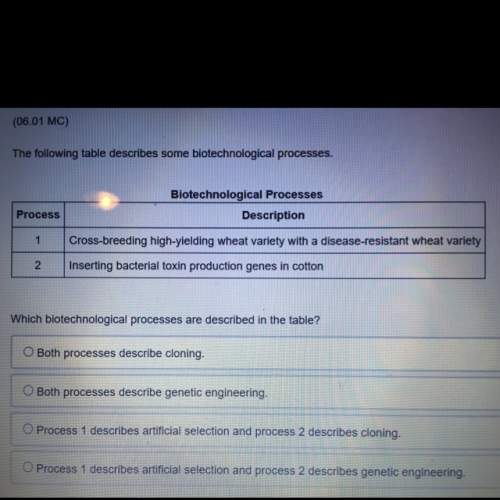
Biology, 06.01.2021 23:10, adrian08022
Seismograph station D is 7,700 kilometers from the epicenter. If the P-wave arrived at this station at 2:15 p. m., at approximately what time did the earthquake occur?
A) 1:56 p. m.
B) 2:00 p. m.
C) 2:04 p. m.
D) 2:08 p. m.

Answers: 2
Other questions on the subject: Biology


Biology, 22.06.2019 11:00, suewignall
Astudent poured a solution of bromothymol blue indicator into three test tubes. then he placed an aquatic plant in two of the test tubes, as shown below. he placed a stopper on each test tube and placed them all in the dark for 24 hours. bromothymol blue turns from blue to yellow in the presence of co2
Answers: 2

Biology, 22.06.2019 12:30, minervica
The table presents the average day and night temperatures in five cities. it also reveals whether a city receives substantial rainfall (wet climate) or little rainfall (dry climate). which city’s rocks are likeliest to experience frost wedging, and why? a) city a because the consistently subzero temperature would prevent water from melting b) city b because it is a wet region and the temperature fluctuates around the freezing point c) city c because it receives plenty of rain fall and the weather is moderately cool d) city d because the hot and dry weather would cause rocks to absorb water
Answers: 3
Do you know the correct answer?
Seismograph station D is 7,700 kilometers from the epicenter. If the P-wave arrived at this station...
Questions in other subjects:



Social Studies, 06.01.2022 06:40


Social Studies, 06.01.2022 06:40


Biology, 06.01.2022 06:40









